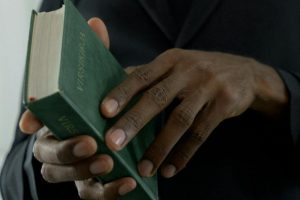“Tolerance” is for menial things like mosquitoes and traffic jams. When it comes to other human beings, let’s seek more.
Take a moment to think about the things in your life that you tolerate: your commute to work, heat waves, tax season. But every time I hear the word “tolerance” in relation to peers, beliefs, or opinions, I feel burdened and uncomfortable. The word does not evoke compassion or understanding. It creates a distance between me and the “other.” Tolerance, at its essence, is not inherently negative, as it is often the first step to improving tensions among people—tensions that may stem from class, religion, or ideology. But it is not enough.
The definition of tolerance can be a bit ambiguous. Tolerance can be defined by objectivity, lack of bigotry, and freedom of prejudice. Another definition is to allow the existence, occurrence, or practice of something without interference, even if it is something we don’t agree with or like. This definition also implies a power structure: one party “allows” the other to exist. The Latin origin of tolerance, tolerare, means to bear or endure, usually through some suffering. We endure the actions, beliefs, or opinions of others with whom we disagree instead of seeking a deeper understanding.
As
the principal of a Jesuit elementary school, I strive for more than
tolerance. Jesuit teaching calls for educators and students to seek magis,
a Latin word that means “more” or “better.” I am called each day to go
beyond tolerance and seek God in all things. If we simply allow
ourselves to be tolerant, we stop short of truly embracing God through
humanity.
At St. Aloysius School in Harlem, New York, where I work, my colleagues and I strive to seek magis through our daily interactions and school mission of helping students become young men and women for others. Only 20 percent of our students are Catholic. The majority is Protestant, and a growing number are Muslim. Through our recent workshops with The Tanenbaum Center for Interreligious Understanding this past year, we realized we have a great opportunity to practice our Jesuit ideals. We must learn more about the various faiths both in and out of our school so that we can, in turn, help our students become stronger in their own faith and accepting of others. By doing so, we will also develop more meaningful relationships with students and families of all backgrounds.
This does not mean that we disregard our school’s Catholic identity. We are still a Catholic institution whose educators will discuss and instill moral values through Catholic readings, texts, and traditions. But embracing the diverse range of faiths in our school community will help us engage our students more sincerely. It also provides opportunities to demonstrate the key similarities among world religions as well as how traditions can vary among different faiths.
If we want our students to become successful, they must become 21st Century Learners. 21st Century learning includes skills like critical thinking, communication, collaboration, and creativity. If Catholic schools do not intentionally model this inquiry, how can we expect our students to be ready to effectively analyze, synthesize, collaborate, and create with people who are different?
Leave tolerance for menial things like mosquitoes, traffic jams, and flight delays. Let’s seek magis and embrace the opportunity to acknowledge each other as fellow human beings.
Daniel Perez is the principal of St. Aloysius School in Harlem, New York.
















Add comment